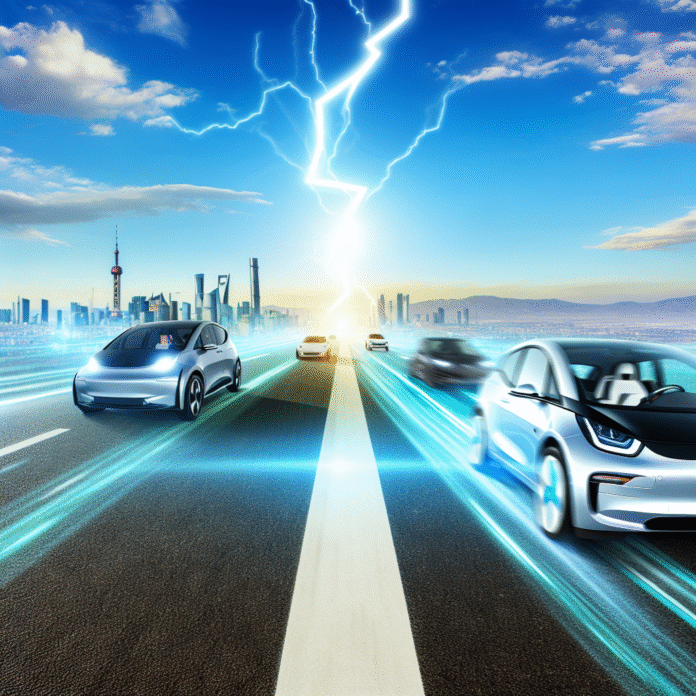Charge Ahead: Exploring the Latest Advances in Electric Vehicle Technology
Imagine you’re stuck in traffic, surrounded by cars belching fumes, while you’re in your pristine electric vehicle (EV), silently gliding through the chaos. The world is slowly waking up to the idea that electric vehicles are more than just a trend; they’re igniting a revolution in automotive technology. The question isn’t whether electric vehicles are here to stay, but rather how quickly the technology is advancing and transforming our daily lives. Buckle up as we dive into the latest innovations in electric vehicle technology that are changing the way we drive.
The Rise of the Electric Vehicle: A Brief Overview
In case you’ve been living under a rock, let’s quickly revisit why electric vehicles have captured the spotlight. The global auto industry is shifting gears away from fossil fuels to combat climate change. With improving battery technology, policy support, and consumer interest, electric vehicles are becoming a viable choice for many drivers. For those who love tech, owning an electric car isn’t just about sustainability; it’s about embracing the future of mobility.
Battery Technology: The Heart of Electric Vehicles
The bacon to your eggs, the yin to your yang—batteries are essential in the world of electric vehicles. The latest advancements have come in terms of efficiency, charging time, and longevity.
- Solid-State Batteries: These are the holy grail of battery technology. Unlike traditional lithium-ion batteries that use liquid electrolytes, solid-state batteries offer improved energy density and safety. Imagine charging your EV in mere minutes instead of hours; that’s the potential here!
- Fast-Charging Solutions: Companies like Tesla and ChargePoint are rolling out ultra-fast chargers that can add hundreds of miles of range in a matter of minutes. Ever find yourself waiting at a charging station? Fast chargers are changing that narrative.
- Recycling Initiatives: As EV adoption grows, so does the need for sustainable battery disposal. Companies are investing in recycling technologies that reclaim valuable materials from old batteries, turning waste into resources.
These advancements not only make driving an EV more convenient but also help in creating a more sustainable manufacturing ecosystem.
Enhanced Driving Experience: Smart Features and Connectivity
Let’s talk about the fun part—the driving experience. EVs like the Ford Mustang Mach-E and the latest Tesla models come packed with features that make even the most mundane drive feel like a video game.
- Autonomous Driving: Innovations in artificial intelligence have birthed advanced driver-assistance systems (ADAS). Think of features like lane-keeping assist, automatic emergency braking, and even full self-driving capabilities. These systems are not just gadgets; they’re safety nets making our roads safer.
- Infotainment Systems: Advanced infotainment systems are becoming central to the EV driving experience. With touchscreen controls, voice recognition, and real-time traffic data, driving an EV feels like operating a high-tech gadget on wheels.
- Over-the-Air Updates: Remember when we used to dread having to take our cars in for software updates? With EVs, manufacturers can push updates directly to your vehicle. Whether it’s added features or enhanced functionality, your car can stay as fresh as your smartphone.
All these features make driving an electric vehicle not just an eco-friendly choice, but an exciting one as well.
The Role of Infrastructure: Charging Networks on the Rise
One major concern potential EV buyers face is the charging infrastructure. Fortunately, this is changing rapidly. Cities, businesses, and even suburban homes are increasingly investing in charging stations.
- Home Charging Solutions: More homeowners are installing Level 2 home chargers, allowing them to charge overnight. Imagine sipping your morning coffee as your car quietly powers up for the day ahead.
- Public Charging Stations: Various companies and local governments are investing heavily in expanding charging networks. Fast chargers are becoming as ubiquitous as gas stations, alleviating range anxiety for many drivers.
- Innovative Solutions: Companies are experimenting with alternative charging methods, such as wireless charging and solar-powered stations. Imagine parking your EV over a charging pad and watching it juice up without a single cord in sight!
The faster and more convenient the charging options become, the less of a hurdle they’ll be for new EV owners.
The Environmental Impact: More Than Just Numbers
While the technology is impressive, the heart of the electric vehicle revolution lies in its potential to reduce carbon emissions. According to various studies, switching to electric vehicles could reduce greenhouse gas emissions significantly over their lifetime compared to traditional gasoline vehicles.
Moreover, renewable energy sources like solar and wind are becoming more prevalent, which can further decrease the environmental impact of electric vehicles. When you plug in your car at home using solar energy, you’re taking a step toward a cleaner planet—not just for yourself, but for future generations.
Conclusion: Your Journey into the EV Future
The electric vehicle industry is evolving at an unprecedented pace. With ongoing advancements in battery technology, smart features, and infrastructure development, there’s never been a better time to consider making the switch. The road ahead not only promises a thrilling driving experience but also a sustainable path toward a better environment. So, as you ponder your next vehicle, remember: not all heroes wear capes; some drive electric!
Curious to learn more about this exciting journey? Check out additional resources on EV technology and innovations to stay informed about what’s coming up next.

